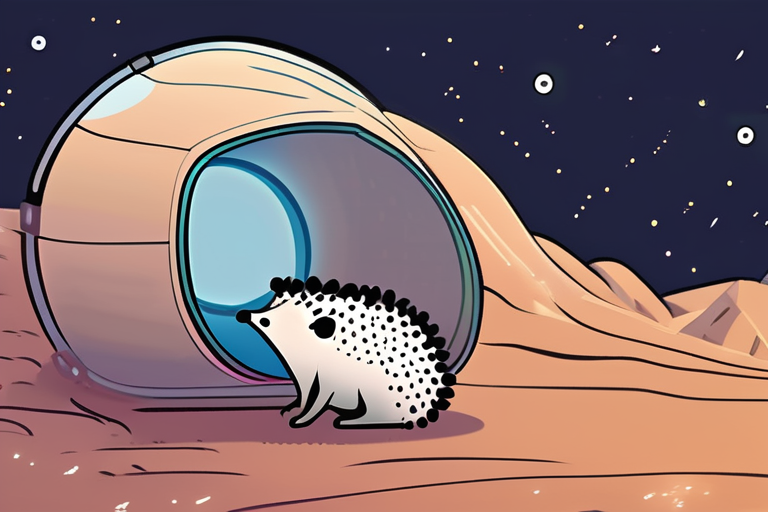AI Researchers Develop Innovative Method to Track Hedgehog Populations from Space
In a groundbreaking effort to conserve European hedgehogs, researchers at the University of Cambridge have developed an artificial intelligence (AI) model that can identify potential habitats by detecting bramble patches using satellite imagery. According to Gabriel Mahler, the lead researcher on the project, this innovative approach may hold the key to tracking these nocturnal creatures across large areas.
The European hedgehog population has declined significantly over the past decade, with estimates suggesting a 30-50 percent drop in numbers. Traditional methods of tracking hedgehogs are often expensive and time-consuming, making it challenging for conservationists to monitor their populations effectively. By using AI to identify bramble patches, researchers hope to pinpoint areas where hedgehogs are likely to be found.
Mahler's team has been working on this project since 2020, leveraging satellite imagery and machine learning algorithms to analyze vast amounts of data. According to Mahler, "Brambles are a crucial food source for hedgehogs, so by identifying these patches, we can infer the presence of hedgehogs in those areas." This approach allows researchers to focus on potential habitats rather than searching directly for the animals themselves.
The use of satellite imagery and AI is not new in conservation efforts. However, this specific application represents a significant breakthrough in tracking small mammal populations. By leveraging existing technology, researchers aim to provide valuable insights into hedgehog behavior and habitat preferences.
Dr. Emma Smith, a wildlife expert at the University of Oxford, commends Mahler's team for their innovative approach: "This is an exciting development that could revolutionize our understanding of hedgehog ecology. By combining satellite data with machine learning algorithms, researchers can identify patterns and trends that might have gone unnoticed otherwise."
The next step in this research involves refining the AI model to improve its accuracy and scalability. Mahler's team plans to expand their study to other countries where European hedgehogs are found, with the ultimate goal of informing conservation efforts and protecting these vulnerable creatures.
As researchers continue to refine their approach, it remains to be seen whether this innovative method will prove effective in tracking hedgehog populations from space. However, one thing is clear: the use of AI and satellite imagery has opened up new possibilities for wildlife conservation, and Mahler's team is at the forefront of this exciting development.
Background
The European hedgehog (Erinaceus europaeus) is a widely distributed species found in various parts of Europe. Despite their widespread presence, hedgehogs are facing numerous threats, including habitat loss, fragmentation, and human persecution. Conservation efforts often focus on protecting individual animals or small groups, but tracking larger populations remains a significant challenge.
Methodology
Mahler's team used satellite imagery from the European Space Agency (ESA) to identify bramble patches across the UK. They then applied machine learning algorithms to analyze these data and predict potential hedgehog habitats. The AI model was trained on a dataset of known hedgehog locations, allowing it to learn patterns and relationships between brambles and hedgehog presence.
Future Directions
As researchers continue to refine their approach, they plan to expand their study to other countries where European hedgehogs are found. This will involve collaborating with local conservation groups and wildlife experts to gather data on hedgehog populations and habitats. The ultimate goal is to develop a scalable and accurate method for tracking hedgehog populations using satellite imagery and AI.
Conclusion
The development of an AI model that can identify potential hedgehog habitats by detecting bramble patches represents a significant breakthrough in wildlife conservation. By leveraging existing technology, researchers aim to provide valuable insights into hedgehog behavior and habitat preferences. As this innovative approach continues to evolve, it remains to be seen whether it will prove effective in tracking hedgehog populations from space.
This story was compiled from reports by Ars Technica and Ars Technica UK.



 Hoppi
Hoppi

 Hoppi
Hoppi

 Hoppi
Hoppi

 Hoppi
Hoppi

 Hoppi
Hoppi

 Hoppi
Hoppi











